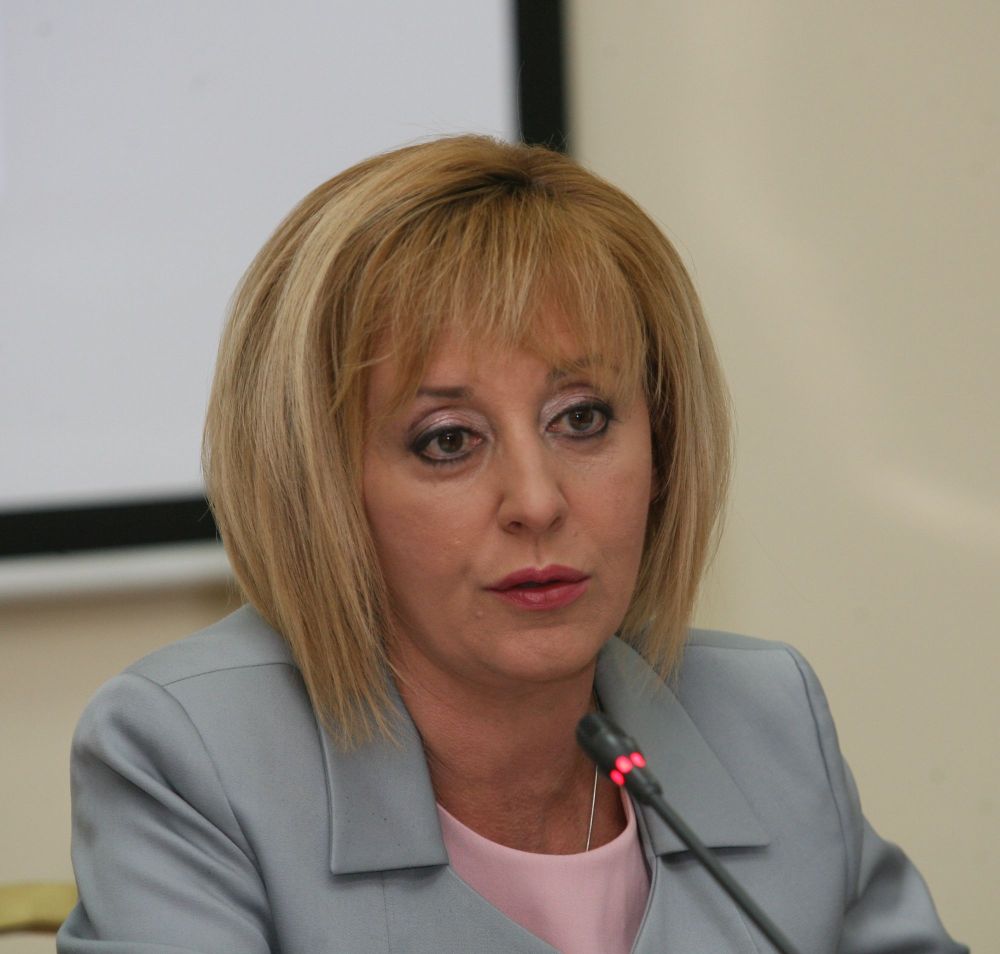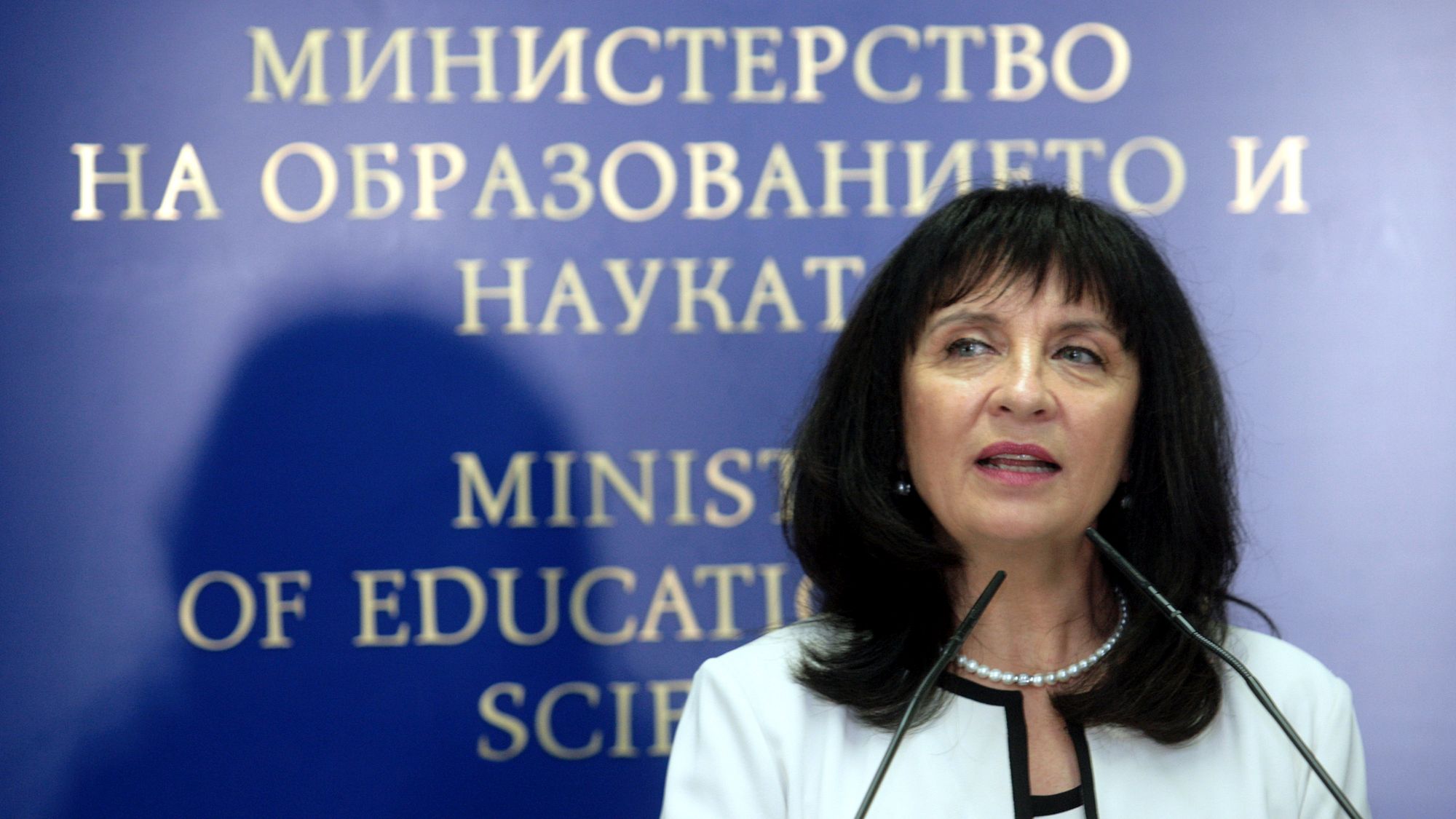|
22 Август 2003 07:56
U.S. Department of State
Bureau of Consular Affairs
Visa Services
--------------------------------------------------------------------------------
INSTRUCTIONS FOR THE 2005 DIVERSITY IMMIGRANT VISA PROGRAM (DV-2005)
The congressionally mandated Diversity Immigrant Visa Program is administered on an annual basis by the Department of State and conducted under the terms of Section 203(c) of the Immigration and Nationality Act (INA). Section 131 of the Immigration Act of 1990 (Pub. L. 101-649) amended INA 203 to provide for a new class of immigrants known as "diversity immigrants" (DV immigrants). The Act makes available 50, 000 permanent resident visas annually to persons from countries with low rates of immigration to the United States.
The annual DV program makes permanent residence visas available to persons meeting the simple, but strict, eligibility requirements. Applicants for Diversity Visas are chosen by a computer-generated random lottery drawing. The visas, however, are distributed among six geographic regions with a greater number of visas going to regions with lower rates of immigration, and with no visas going to citizens of countries sending more than 50, 000 immigrants to the U.S. in the past five years. Within each region, no one country may receive more than seven percent of the available Diversity Visas in any one year.
For DV-2005, natives of the following countries are not eligible to apply because they sent a total of more than 50, 000 immigrants to the U.S. in the previous five years:
CANADA, CHINA (mainland-born), COLOMBIA, DOMINICAN REPUBLIC, EL SALVADOR, HAITI, INDIA, JAMAICA, MEXICO, PAKISTAN, PHILIPPINES, RUSSIA, SOUTH KOREA, UNITED KINGDOM (except Northern Ireland) and its dependent territories, and VIETNAM. Persons born in Hong Kong SAR, Macau SAR and Taiwan are eligible.
ENTRIES FOR THE DV-2005 DIVERSITY VISA LOTTERY MUST BE SUBMITTED ELECTRONICALLY BETWEEN SATURDAY, NOVEMBER 1, 2003 AND TUESDAY, DECEMBER 30, 2003. APPLICANTS MAY ACCESS THE ELECTRONIC DIVERSITY VISA ENTRY FORM AT ‘WWW.DVLOTTERY.STATE.GOV’ DURING THE 60 DAY REGISTRATION PERIOD BEGINNING NOVEMBER 1. PAPER ENTRIES WILL NOT BE ACCEPTED.
REQUIREMENTS FOR ENTRY
Applicant must be a native of one of the countries listed beginning on page 10. See “List Of Countries By Region Whose Natives Qualify.”
Native of a country whose natives qualify: In most cases this means the country in which the applicant was born. However, if a person was born in a country whose natives are ineligible but his/her spouse was born in a country whose natives are eligible, such person can claim the spouse’s country of birth providing both the applicant and spouse are issued visas and enter the U.S. simultaneously. If a person was born in a country whose natives are ineligible, but neither of his/her parents was born there or resided there at the time of the birth, such person may be able to claim nativity in one of the parents’ country of birth.
Applicant must meet either the education or training requirement of the DV program.
Education or Training: An applicant must have EITHER a high school education or its equivalent, defined as successful completion of a 12-year course of elementary and secondary education; OR two years of work experience within the past five years in an occupation requiring at least two years of training or experience to perform. The U.S. Department of Labor’s O*Net OnLine database will be used to determine qualifying work experience. Applicants will also find a link to a Labor Department list of qualifying occupations at the Consular Affairs website: http://www.travel.state.gov
If the applicant cannot meet these requirements, he or she should NOT submit an entry to the DV program.
PROCEDURES FOR SUBMITTING AN ENTRY TO DV-2005
All entries by an applicant will be disqualified if more than ONE entry for the applicant is received, regardless of who submitted the entry. Applicants may prepare and submit their own entries, or have someone submit the entry for them.
The Department of State will only accept completed Electronic Diversity Visa Entry Forms submitted electronically at http://www.dvlottery.state.gov during the 60 day registration period beginning November 1, 2003.
The Department of State will send DV lottery entrants an electronic confirmation notice upon receipt of a completed EDV Entry Form.
Paper entries will not be accepted.
The entry will be disqualified if all required photos are not submitted. Recent photographs of the applicant and his/her spouse and each child under 21 years of age, including all natural children as well as all legally-adopted and stepchildren, excepting a child who is already a U.S. citizen or a Legal Permanent Resident, even if a child no longer resides with the applicant or is not intended to immigrate under the DV program, must be submitted electronically with the Electronic Diversity Visa Entry Form. Group or family photos will not be accepted; there must be a separate photo for each family member.
Each applicant, his/her spouse, and each child will therefore need a computer file containing his/her digital photo (image) which will be submitted on-line with the EDV Entry Form. The image file can be produced either by taking a new digital photograph or by scanning a photographic print with a digital scanner.
If the submitted digital images do not conform to the following specifications, the system will automatically reject the EDV Entry Form and notify the sender.
The image must be in the Joint Photographic Experts Group (JPEG) format.
The image must be either in color or grayscale; monochrome images (2-bit color depth) will not be accepted.
If a new digital photograph is taken, it must have a resolution of 320 pixels wide by 240 pixels high, and a color depth of either 24-bit color, 8-bit color, or 8-bit grayscale.
If a photographic print is scanned, the print must be 2 inches by 2 inches (50mm x 50mm) square. It must be scanned at a resolution of 150 dots per inch (dpi) and with a color depth of either 24-bit color, 8-bit color, or 8-bit grayscale.
The maximum image size accepted will be sixty-two thousand five hundred (62, 500) bytes.
If the submitted digital images do not conform to the following specifications, the entry will be disqualified:
Applicant, spouse, or child must be directly facing the camera; the head of the person being photographed should not be tilted up, down or to the side, and should cover about 50% of the area of the photo.
The photo should be taken with the person being photographed in front of a neutral, light-colored background. Photos taken with very dark or patterned, busy backgrounds will not be accepted.
Photos in which the face of the person being photographed is not in focus will not be accepted.
Photos in which the person being photographed is wearing sunglasses or other paraphernalia which detracts from the face will not be accepted.
Photos of applicants wearing head coverings or hats are only acceptable due to religious beliefs, and even then, may not obscure any portion of the face of the applicant. Photos of applicants with tribal or other headgear not specifically religious in nature are not acceptable. Photos of military, airline or other personnel wearing hats will not be accepted.
THE ENTRY
There is only one way to enter the DV-2005 lottery. Applicants must submit an Electronic Diversity Visa Entry Form (EDV Entry Form), which is accessible only at http://www.dvlottery.state.gov. Failure to complete the form in its entirety will disqualify the applicant’s entry. Applicants will be asked to submit the following information on the EDV Entry Form.
1. FULL NAME - Last/Family Name, First Name, Middle name
2. DATE OF BIRTH - Day, Month, Year
3. GENDER - Male or Female
4. CITY/TOWN OF BIRTH
5. COUNTRY OF BIRTH - The name of the country should be that which is currently in use for the place where the applicant was born.
6. APPLICANT PHOTOGRAPH - See page 2 for information on photo specifications.
7. MAILING ADDRESS - Address, City/Town, District/Country/Province/State, Postal Code/Zip Code, Country
8. PHONE NUMBER (optional)
9. E-MAIL ADDRESS (optional)
10. COUNTRY OF ELIGIBILITY IF THE APPLICANT’S NATIVE COUNTRY IS DIFFERENT FROM COUNTRY OF BIRTH - If the applicant is claiming nativity in a country other than his/her place of birth, this information must be submitted on the entry. If an applicant is claiming nativity through spouse or parent, please indicate this on the entry.
11. MARRIAGE STATUS - Yes or No
12. NUMBER OF CHILDREN THAT ARE UNMARRIED AND UNDER 21 YEARS OF AGE
13. SPOUSE INFORMATION - Name, Date of Birth, Gender, City/Town of Birth, Country of Birth, Photograph
14. CHILDREN INFORMATION - Name, Date of Birth, Gender, City/Town of Birth, Country of Birth, Photograph
NOTE: Entries must include the name, date and place of birth of the applicant’s spouse and all natural children, as well as all legally-adopted and stepchildren, who are unmarried and under the age of 21, excepting those children who are already U.S. citizens or Legal Permanent Residents, even if you are no longer legally married to the child’s parent, and even if the spouse or child does not currently reside with you and/or will not immigrate with you. Note that married children and children 21 years or older will not qualify for the diversity visa. Failure to list all children will result in your disqualification for the visa. (See question 11 on the list of Frequently Asked Questions.)
SELECTION OF APPLICANTS
Applicants will be selected at random by computer from among all qualified entries. Those selected will be notified by mail between May and July 2004 and will be provided further instructions, including information on fees connected with immigration to the U.S. Persons not selected will NOT receive any notification. U.S. embassies and consulates will not be able to provide a list of successful applicants. Spouses and unmarried children under age 21 of successful applicants may also apply for visas to accompany or follow to join the principal applicant. DV-2005 visas will be issued between October 1, 2004 and September 30, 2005.
In order to actually receive a visa, applicants selected in the random drawing must meet ALL eligibility requirements under U.S. law. Processing of entries and issuance of diversity visas to successful applicants and their eligible family members MUST occur by midnight on September 30, 2005. Under no circumstances can diversity visas be issued or adjustments approved after this date, nor can family members obtain diversity visas to follow to join the applicant in the U.S. after this date.
Important Notice
NO fee is charged to enter the annual DV program. The U.S. Government employs no outside consultants or private services to operate the DV program. Any intermediaries or others who offer assistance to prepare DV casework for applicants do so without the authority or consent of the U.S. Government. Use of any outside intermediary or assistance to prepare a DV entry is entirely at the applicant's discretion.
A qualified entry submitted electronically directly by an applicant has an equal chance of being selected by the computer at the Kentucky Consular Center as does an entry submitted electronically through a paid intermediary who completes the entry for the applicant. Every entry received during the lottery registration period will have an equal random chance of being selected within its region. However, receipt of more than one entry per person will disqualify the person from registration, regardless of the source of the entry.
FREQUENTLY ASKED QUESTIONS ABOUT DV REGISTRATION
1. WHAT DOES THE TERM "NATIVE" MEAN? ARE THERE ANY SITUATIONS IN WHICH PERSONS WHO WERE NOT BORN IN A QUALIFYING COUNTRY MAY APPLY?
"Native" ordinarily means someone born in a particular country, regardless of the individual's current country of residence or nationality. But for immigration purposes “native” can also mean someone who is entitled to be “charged” to a country other than the one in which he/she was born under the provisions of Section 202(b) of the Immigration and Nationality Act.
For example, if a principal applicant was born in a country that is not eligible for this year’s DV program, he/she may claim “chargeability” to the country where his/her derivative spouse was born, but he/she will not be issued a DV-1 unless the spouse is also eligible for and issued a DV-2, and both must enter the U.S. together on the DVs. In a similar manner, a minor dependent child can be “charged” to a parent’s country of birth.
Finally, any applicant born in a country ineligible for this year’s DV program can be “charged” to the country of birth of either parent as long as neither parent was a resident of the ineligible country at the time of the applicant’s birth. In general, people are not considered residents of a country in which they were not born or legally naturalized if they are only visiting the country temporarily or stationed in the country for business or professional reasons on behalf of a company or government.
An applicant who claims alternate chargeability must include information to that effect on the application for registration.
2. ARE THERE ANY CHANGES OR NEW REQUIREMENTS IN THE APPLICATION PROCEDURES FOR THIS DIVERSITY VISA REGISTRATION?
All DV-2005 lottery entries must be submitted electronically at http://www.dvlottery.state.gov between Saturday, November 1, 2003 and Tuesday, December 30, 2003. No paper entries will be accepted.
The Department of State implemented an electronic registration system in order to make the Diversity Visa process more efficient and secure. The Department will utilize special technology and other means to identify applicants who commit fraud for the purposes of illegal immigration or who submit multiple entries.
The signature requirement on the DV entry has been eliminated and the DV-2005 Diversity Immigrant Visa Program registration period will run from November 1 through December 30. The other major change from last year is that natives of Russia will not be eligible to apply for a diversity visa. (Please see question 4 below for a description of why natives of certain countries do not qualify for the DV Program.)
3. ARE SIGNATURES AND PHOTOGRAPHS REQUIRED FOR EACH FAMILY MEMBER, OR ONLY FOR THE PRINCIPAL APPLICANT?
Signatures are not required on the Electronic Diversity Visa Entry Form. Recent and individual photos of the applicant, his/her spouse and all children under 21 years of age required. Family or group photos are not accepted. Check the information on the photo requirements on page 2 of this bulletin.
4. WHY DO NATIVES OF CERTAIN COUNTRIES NOT QUALIFY FOR THE DIVERSITY PROGRAM?
Diversity visas are intended to provide an immigration opportunity for persons from countries other than the countries which send large numbers of immigrants to the U.S. The law states that no diversity visas shall be provided for natives of "high admission" countries. The law defines this to mean countries from which a total of 50, 000 persons in the Family-Sponsored and Employment-Based visa categories immigrated to the United States during the previous five years. Each year, the Bureau of Citizenship and Immigration Services (BCIS) adds the family and employment immigrant admission figures for the previous five years in order to identify the countries whose natives must be excluded from the annual diversity lottery. Because there is a separate determination made before each annual DV entry period, the list of countries whose natives do not qualify may change from one year to the next.
5. WHAT IS THE NUMERICAL LIMIT FOR DV-2005?
By law, the U.S. diversity immigration program makes available a maximum of 55, 000 permanent residence visas each year to eligible persons. However, the Nicaraguan Adjustment and Central American Relief Act (NACARA) passed by Congress in November 1997 stipulates that beginning as early as DV-99, and for as long as necessary, 5, 000 of the 55, 000 annually-allocated diversity visas will be made available for use under the NACARA program. The actual reduction of the limit to 50, 000 began with DV-2000 and remains in effect for the DV-2005 program.
6. WHAT ARE THE REGIONAL DIVERSITY VISA (DV) LIMITS FOR DV-2005?
The Bureau of Citizenship and Immigration Services (BCIS) determines the DV regional limits for each year according to a formula specified in Section 203(c) of the Immigration and Nationality Act (INA). Once the BCIS has completed the calculations, the regional visa limits will be announced.
7. WHEN WILL ENTRIES FOR THE DV-2005 PROGRAM BE ACCEPTED?
The DV-2005 entry period will begin on Saturday, November 1, 2003 and will last for 60 days through Tuesday, December 30, 2003. Each year millions apply for the program during the registration period. The massive volume of entries creates an enormous amount of work in selecting and processing successful applicants. Holding the entry period during November and December will ensure successful applicants are notified in a timely manner, and gives both them and our embassies and consulates time to prepare and complete entries for visa issuance.
8. MAY PERSONS WHO ARE IN THE U.S. APPLY FOR THE PROGRAM?
Yes, an applicant may be in the U.S. or in another country, and the entry may be submitted from the U.S. or from abroad.
9. IS EACH APPLICANT LIMITED TO ONLY ONE ENTRY DURING THE ANNUAL DV REGISTRATION PERIOD?
Yes, the law allows only one entry by or for each person during each registration period; applicants for whom more than one entry is submitted will be disqualified. The Department of State will employ sophisticated technology and other means to identify individuals that submit multiple entries during the registration period. Applicants submitting more than one entry will be disqualified and an electronic record will be permanently maintained by the Department of State. Applicants may apply for the program each year during the regular registration period.
10. MAY A HUSBAND AND A WIFE EACH SUBMIT A SEPARATE ENTRY?
Yes, a husband and a wife may each submit one entry if each meets the eligibility requirements. If either were selected, the other would be entitled to derivative status.
11. WHAT FAMILY MEMBERS MUST I INCLUDE ON MY DV ENTRY?
On your entry you must list your spouse, that is husband or wife, and all unmarried children under 21 years of age, with the exception of a child who is already a U.S. citizen or a Legal Permanent Resident. You must list your spouse even if you are currently separated from him/her. However, if you are legally divorced, you do not need to list your former spouse. For customary marriages, the important date is the date of the original marriage ceremony, not the date on which the marriage is registered. You must list ALL your children who are unmarried and under 21 years of age, whether they are your natural children, your spouse’s children by a previous marriage, or children you have formally adopted in accordance with the laws of your country, unless a child is already a U.S. citizen or Legal Permanent Resident. List all children under 21 years of age even if they no longer reside with you or you do not intend for them to immigrate under the DV program.
The fact that you have listed family members on your entry does not mean that they later must travel with you. They may choose to remain behind. However, if you include an eligible dependent on your visa application forms that you failed to include on your original entry, your case will be disqualified. (This only applies to persons who were dependents at the time the original application was submitted, not those acquired at a later date.) Your spouse may still submit a separate entry, even though he or she is listed on your entry, as long as both entries include details on all dependents in your family. See question 10 above.
12. MUST EACH APPLICANT SUBMIT HIS/HER OWN ENTRY, OR MAY SOMEONE ACT ON BEHALF OF AN APPLICANT?
Applicants may prepare and submit their own entries, or have someone submit the entry for them. Regardless of whether an entry is submitted by the applicant directly, or assistance is provided by an attorney, friend, relative, etc., only one entry may be submitted in the name of each person. If the entry is selected, the notification letter will be sent only to the mailing address provided on the entry.
13. WHAT ARE THE REQUIREMENTS FOR EDUCATION OR WORK EXPERIENCE?
The law and regulations require that every applicant must have at least a high school education or its equivalent or, within the past five years, have two years of work experience in an occupation requiring at least two years training or experience. A "high school education or equivalent" is defined as successful completion of a twelve-year course of elementary and secondary education in the United States or successful completion in another country of a formal course of elementary and secondary education comparable to a high school education in the United States. Documentary proof of education or work experience should not be submitted with the lottery entry, but must be presented to the consular officer at the time of the visa interview. To determine eligibility based on work experience, definitions from the Department of Labor’s O*Net OnLine database will be used.
14. HOW WILL SUCCESSFUL ENTRANTS BE SELECTED?
At the Kentucky Consular Center, all entries received from each region will be individually numbered. After the end of the registration period, a computer will randomly select entries from among all the entries received for each geographic region. Within each region, the first entry randomly selected will be the first case registered, the second entry selected the second registration, etc. All entries received during the registration period will have an equal chance of being selected within each region. When an entry has been selected, the applicant will be sent a notification letter by the Kentucky Consular Center, which will provide visa application instructions. The Kentucky Consular Center will continue to process the case until those who are selected are instructed to appear for visa interviews at a U.S. consular office, or until those able to do so apply at a BCIS office in the United States for change of status.
15. MAY WINNING APPLICANTS ADJUST THEIR STATUS WITH BCIS?
Yes, provided they are otherwise eligible to adjust status under the terms of Section 245 of the INA, selected applicants who are physically present in the United States may apply to the Bureau of Citizenship and Immigration Services (BCIS) for adjustment of status to permanent resident. Applicants must ensure that BCIS can complete action on their cases, including processing of any overseas derivatives, before September 30, 2005, since on that date registrations for the DV-2005 program expire. No visa numbers for the DV-2005 program will be available after midnight on September 30, 2005 under any circumstances.
16. WILL APPLICANTS WHO ARE NOT SELECTED BE INFORMED?
No, applicants who are not selected will receive no response to their entry. Only those who are selected will be informed. All notification letters are sent within about nine months of the end of the application period to the address indicated on the entry. Anyone who does not receive a letter will know that his/her application has not been selected.
17. HOW MANY APPLICANTS WILL BE SELECTED?
There are 50, 000 DV visas available for DV-2005, but more than that number of individuals will be selected. Because it is likely that some of the first 50, 000 persons who are selected will not qualify for visas or pursue their cases to visa issuance, more than 50, 000 entries will be selected by the Kentucky Consular Center to ensure that all of the available DV visas are issued. However, this also means that there will not be a sufficient number of visas for all those who are initially selected. All applicants who are selected will be informed promptly of their place on the list. Interviews with those selected will begin in early October 2004. The Kentucky Consular Center will send appointment letters to selected applicants four to six weeks before the scheduled interviews with U.S. consular officers at overseas posts. Each month visas will be issued, visa number availability permitting, to those applicants who are ready for issuance during that month. Once all of the 50, 000 DV visas have been issued, the program for the year will end. In principle, visa numbers could be finished before September 2005. Selected applicants who wish to receive visas must be prepared to act promptly on their cases. Random selection by the Kentucky Consular Center computer does not automatically guarantee that you will receive a visa.
18. IS THERE A MINIMUM AGE FOR APPLICANTS TO APPLY FOR THE DV PROGRAM?
There is no minimum age to apply for the program, but the requirement of a high school education or work experience for each principal applicant at the time of application will effectively disqualify most persons who are under age 18.
19. ARE THERE ANY FEES FOR THE DV PROGRAM?
There is no fee for submitting an entry. A special DV case processing fee will be payable later by persons whose entries are actually selected and processed at a U.S. consular section for this year’s program. DV applicants, like other immigrant visa applicants, must also pay the regular visa fees at the time of visa issuance. Details of required fees will be included with the instructions sent by the Kentucky Consular Center to applicants who are selected.
20. ARE DV APPLICANTS SPECIALLY ENTITLED TO APPLY FOR A WAIVER OF ANY OF THE GROUNDS OF VISA INELIGIBILITY?
No. Applicants are subject to all grounds of ineligibility for immigrant visas specified in the Immigration and Nationality Act. There are no special provisions for the waiver of any ground of visa ineligibility other than those ordinarily provided in the Act.
21. MAY PERSONS WHO ARE ALREADY REGISTERED FOR AN IMMIGRANT VISA IN ANOTHER CATEGORY APPLY FOR THE DV PROGRAM?
Yes, such persons may apply for the DV program.
22. HOW LONG DO APPLICANTS WHO ARE SELECTED REMAIN ENTITLED TO APPLY FOR VISAS IN THE DV CATEGORY?
Persons selected in the DV-2005 lottery are entitled to apply for visa issuance only during fiscal year 2005, i.e., from October 2004 through September 2005. Applicants must obtain the DV visa or adjust status by the end of the Fiscal Year (September 30, 2005). There is no carry-over of DV benefits into the next year for persons who are selected but who do not obtain visas during FY-2005. Also, spouses and children who derive status from a DV-2005 registration can only obtain visas in the DV category between October 2004 and September 2005. Applicants who apply overseas will receive an appointment letter from the Kentucky Consular Center four to six weeks before the scheduled appointment.
LIST OF COUNTRIES BY REGION WHOSE NATIVES QUALIFY
The lists below show the countries whose natives are QUALIFIED within each geographic region for this diversity program. The determination of countries within each region is based on information provided by the Geographer of the Department of State. The countries whose natives do not qualify for the DV-2005 program were identified by the Bureau of Citizenship and Immigration Services (BCIS) according to the formula in Section 203(c) of the Immigration and Nationality Act. Dependent areas overseas are included within the region of the governing country. The countries whose natives do NOT qualify for this diversity program (because they are the principal source countries of Family-Sponsored and Employment-Based immigration, or "high admission" countries) are noted in parentheses after the respective regional lists.
AFRICA
Algeria
Angola
Benin
Botswana
Burkina Faso
Burundi
Cameroon
Cape Verde
Central African Republic
Chad
Comoros
Congo
Congo, Democratic Republic of the
Cote D’Ivoire (Ivory Coast)
Djibouti
Egypt
Equatorial Guinea
Eritrea
Ethiopia
Gabon
Gambia, The
Ghana
Guinea
Guinea-Bissau
Kenya
Lesotho
Liberia
Libya
Madagascar
Malawi
Mali
Mauritania
Mauritius
Morocco
Mozambique
Namibia
Niger
Nigeria
Rwanda
Sao Tome and Principe
Senegal
Seychelles
Sierra Leone
Somalia
South Africa
Sudan
Swaziland
Tanzania
Togo
Tunisia
Uganda
Zambia
Zimbabwe
ASIA
Afghanistan
Bahrain
Bangladesh
Bhutan
Brunei
Burma
Cambodia
East Timor
Hong Kong Special Administrative Region
Indonesia
Iran
Iraq
Israel
Japan
Jordan
Kuwait
Laos
Lebanon
Malaysia
Maldives
Mongolia
Nepal
North Korea
Oman
Qatar
Saudi Arabia
Singapore
Sri Lanka
Syria
Taiwan
Thailand
United Arab Emirates
Yemen
Natives of the following Asian countries do not qualify for this year's diversity program: China [mainland-born], India, Pakistan, South Korea, Philippines, and Vietnam. The Hong Kong S.A.R and Taiwan do qualify and are listed above. Macau S.A.R. also qualifies and is listed below.
EUROPE
Albania
Andorra
Armenia
Austria
Azerbaijan
Belarus
Belgium
Bosnia and Herzegovina
Bulgaria
Croatia
Cyprus
Czech Republic
Denmark (including components and dependent areas overseas)
Estonia
Finland
France (including components and dependent areas overseas)
Georgia
Germany
Greece
Hungary
Iceland
Ireland
Italy
Kazakhstan
Kyrgyzstan
Latvia
Liechtenstein
Lithuania
Luxembourg
Macau Special Administrative Region
Macedonia, the Former Yugoslav Republic
Malta
Moldova
Monaco
Netherlands (including components and dependent areas overseas)
Northern Ireland
Norway
Poland
Portugal (including components and dependent areas overseas)
Romania
San Marino
Serbia and Montenegro
Slovakia
Slovenia
Spain
Sweden
Switzerland
Tajikistan
Turkey
Turkmenistan
Ukraine
Uzbekistan
Vatican City
Natives of the following European countries do not qualify for this year's diversity program: Great Britain and Russia. Great Britain (United Kingdom) includes the following dependent areas: Anguilla, Bermuda, British Virgin Islands, Cayman Islands, Falkland Islands, Gibraltar, Montserrat, Pitcairn, St. Helena, Turks and Caicos Islands. Note that for purposes of the diversity program only, Northern Ireland is treated separately; Northern Ireland does qualify and is listed among the qualifying areas.
NORTH AMERICA
The Bahamas
In North America, natives of Canada and Mexico do not qualify for this year's diversity program.
OCEANIA
Australia (including components and dependent areas overseas)
Fiji
Kiribati
Marshall Islands
Micronesia, Federated States of
Nauru
New Zealand (including components anddependent areas overseas)Palau
Papua New Guinea
Solomon Islands
Tonga
Tuvalu
Vanuatu
Samoa
SOUTH AMERICA, CENTRAL AMERICA, AND THE CARIBBEAN
Antigua and Barbuda
Argentina
Barbados
Belize
Bolivia
Brazil
Chile
Costa Rica
Cuba
Dominica
Ecuador
Grenada
Guatemala
Guyana
Honduras
Nicaragua
Panama
Paraguay
Peru
Saint Kitts and Nevis
Saint Lucia
Saint Vincent and the Grenadines
Suriname
Trinidad and Tobago
Uruguay
Venezuela
Countries in this region whose natives do not qualify for this year's diversity program: Colombia, Dominican Republic, El Salvador, Haiti, Jamaica, and Mexico.
Return to Consular Affairs Main Page
Go to Other Visa Information
Return to Visa Services Page
|























 .
. 

